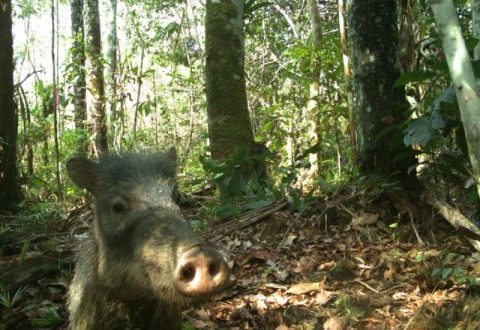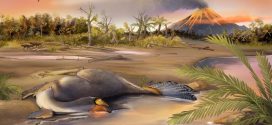Researchers have collected selfies of various animals in the Amazon Rainforest, by using motion-activated camera traps and a drone to capture a never-before-seen picture of the vast forest.
Earlier this year, a team of 25 scientists trekked to the unexplored reaches of Medio Putumayo-Algodón, Peru and spent 17 days conducting a rapid biological and social inventory of the area. As part of their efforts to document the region’s biodiversity, the team set up 14 motion-activated camera traps and used a drone to capture aerial footage of the rainforest. The results are amazing.
The camera traps revealed remarkable biodiversity in the area, showing animals like ocelots, giant armadillos, currassows, giant anteaters, tapirs, peccaries, and pacas up close and personal in their native habitat. Meanwhile, the aerial drone footage helped paint a picture of the overall landscape, sharing a never-before-seen look at the vast forest, which is only accessible by helicopter.
“No scientists have ever explored this area, let alone document it with cameras and drones,” explains Jon Markel, The Field Museum’s Geographic Information Systems (GIS) specialist.
“These images are the first time this remote wilderness and the species that call it home are being recorded for science.”
During the inventory, biologists encountered an astonishing amount of wildlife, recording 1,820 plant, fish, amphibian, reptile, bird, and mammal species, including 19 species believed to be new to science. The team documented the largest number of frogs and snakes of any Field Museum rapid inventory, discovered large peat deposits, and found clay licks that provide salt essential to the health of local wildlife.
The social team worked with the nine indigenous groups living in the region to understand their use of the landscape and their aspirations for the future. They have a clear vision of wanting to protect these lands. However, the area is under threat from illegal mining and logging, as well as a proposed road.
“You can’t argue for the protection of an area without knowing what is there,” said Corine Vriesendorp, Director of The Field Museum’s rapid inventory program. “We discovered an intact forest inhabited by indigenous people for centuries and teeming with wildlife. We want it to survive and thrive long after our cameras are gone.”
Agencies/Canadajournal
 Canada Journal – News of the World Articles and videos to bring you the biggest Canadian news stories from across the country every day
Canada Journal – News of the World Articles and videos to bring you the biggest Canadian news stories from across the country every day



